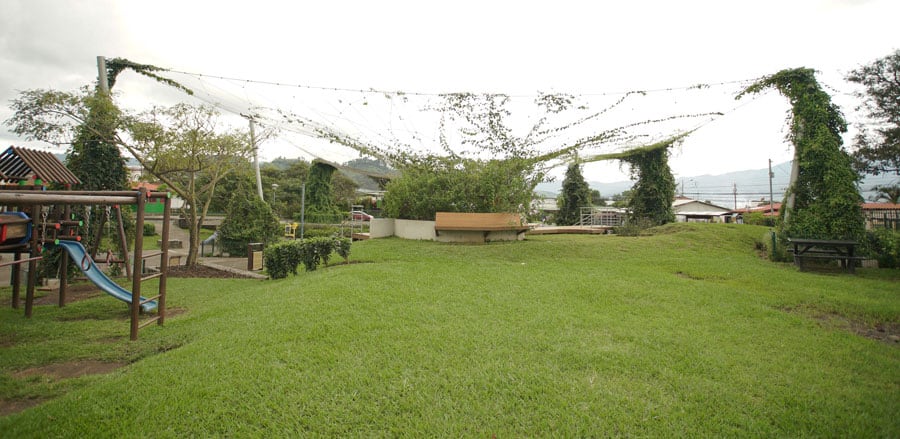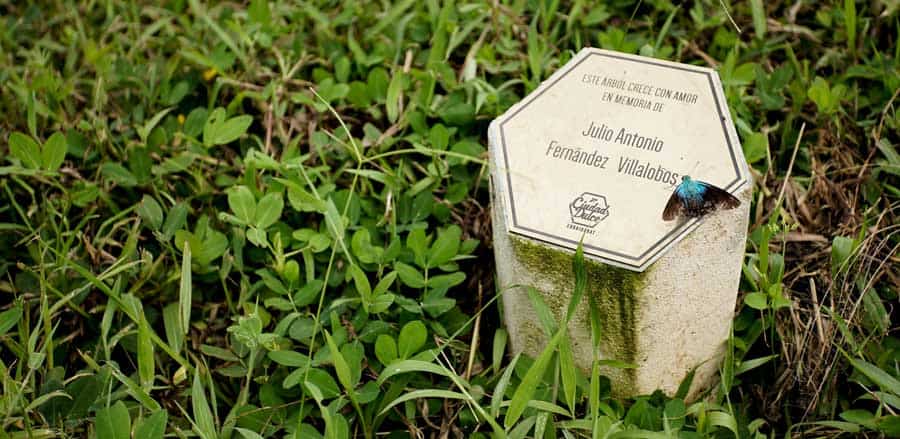Wellbeing in the Time of Cities: The Sweet City Vision
Curridabat, Costa Rica, is dealing with several issues that are common to municipalities around the world. The answer they found, however, is a truly unique one that considers everyone living in Curridabat a city dweller – human or not.
Nature as an Urban Actor
Years ago, when we started talking about the need to recognise native bees as the centre of urban design, a member of the recently elected City Council asked: “How can we talk about bees when we are still dealing with drinkable water issues in our city? There are certainly more important issues to pay attention to”.
To us – the ones “on the green side” of the municipality – the relationship between one and the other was obvious. But even though we were ready to respond with a wealth of scientific information, we realised that our response would not be valid until we found a way to express our position in an accessible, colloquial language.
Throughout its history, Latin America has often imported urban development models that correspond neither to its urban realities nor its needs as a region. These models have lagged behind global challenges such as climate change, inequality, human security, technology gaps, and ecosystem connectivity, among others.
The Sweet City vision recognises pollinators, which are the largest producers of plants, trees, and ultimately soil, as the centre of urban design. By reframing the role of pollinators, and recognising them as native inhabitants and city dwellers, Sweet City overcomes the long-lived antagonism between city and nature that has characterised traditional urban development.
We drew from our vast experience in participatory processes and decided to expand our definition of what a citizen of Curridabat is. Pollinators, trees, soil microorganisms, and the whole spectrum of living organisms we seek to protect and recruit are now considered as citizens in their own right, and are recognised for the ecological services they provide. This allows us to better plan to their benefit and to explain to the people of our city and other cities the vital roles these fellow citizens play in the development of a truly healthy city that provides wellbeing for all.
It was not until 2016 that Sweet City became a public policy, when the same local party that had governed for the last 16 years included it in their Government Plan Proposal. Both the municipality and the City Council, which includes representatives from several political parties, not only officially embraced the Sweet City vision through its Strategic Municipal Plan (SMP) for the period 2018-2020, but also agreed to make it the official Curridabat city brand.

© Municpalidad de Curridabat, 2019
The Plan
The current five-year SMP delineates how five dimensions linked to wellbeing will be considered in order to plan and create a better city: biodiversity, infrastructure, habitat, coexistence, and productivity. The Plan also underlines the importance of bringing about tangible change through shifts in how citizens experience their surroundings. All projects and initiatives are planned through design thinking and reverse engineering methods to maximise the degree and speed of the desired changes.
All city initiatives focus on one or more of the following seven goals over this five-year period: adequate water management; recovery of soil health; improved security in key spaces like parks; enhancement of intermodal transportation and walkability; promotion of conscious eating and mental health; and strengthening of participatory local governance.
We just received funds from the United Nations Development Programme to establish our own greenhouse to produce our own “sweet plants” from our official Sweet City Greenery Guide, which focusses on species native to our city, which are the greater pollinator attractors. All this goes hand in hand with our zero waste and urban garden initiatives.

© Municpalidad de Curridabat, 2019
Healthy Urban Environments
Our idiosyncratic symbols for the promotion of wellbeing are pollinators, and we have based the whole model on the importance of nature and its inclusion as a key element for healthy urban environments. Nevertheless, the Sweet City concept and the model of development it proposes permeate through all other dimensions of urban life we tend. As an example, the coexistence dimension includes paramount aspects of wellbeing such as access to cultural activities, safe spaces for sports and recreation, betterment of human capacities, and healthy interactions with city-dwelling wildlife and pets.
While one aspect of the Sweet City is to focus on nature as an urban actor, we also incorporate the topic of wellbeing. Our flagship Wellbeing Program aims at providing our citizenry, especially those from underprivileged communities, with the skills needed for leading a healthy, well-balanced life. This programme seeks to shift how our citizens experience mental health and conscious eating in their lives, and also underlines the importance of regular contact with nature as a key element of true wellbeing.
We want to raise awareness on neglected health issues, combining creative marketing strategies with scientific information. Above all, we seek to demystify mental health issues and acknowledge them within our citizenry. While we want to address all citizens regardless of economic standing or class, we address those from underprivileged communities above all.

© Municpalidad de Curridabat, 2019
A Wealth of Natural Resources
Currently, we face two political challenges: first, to be considered by the Central Government as a fundamental actor on health issues and, second, to implement tools that evaluate local governments’ performances based on the most democratic and holistic key performance indicator: citizens’ life satisfaction.
The great majority of the world’s cities share Curridabat’s profile: small size, lack of coherent urban planning throughout history, limited geopolitical role, and more factors that tend to limit their economic possibilities. However, they usually have a wealth of natural resources. These have to be managed responsibly, so that they can continue to offer vital ecological services as well as livelihood opportunities.
Therefore, we consider this vision of development as a blueprint that can be reproduced to generate prosperity in other cities around the world and will help to redefine the role that small and medium-sized cities play on the global stage. Sweet City started with a question: how can we add value to the planet instead of subtracting it? Our answer was Sweet City – but we believe there are many creative and unique ways to answer this particular question.
